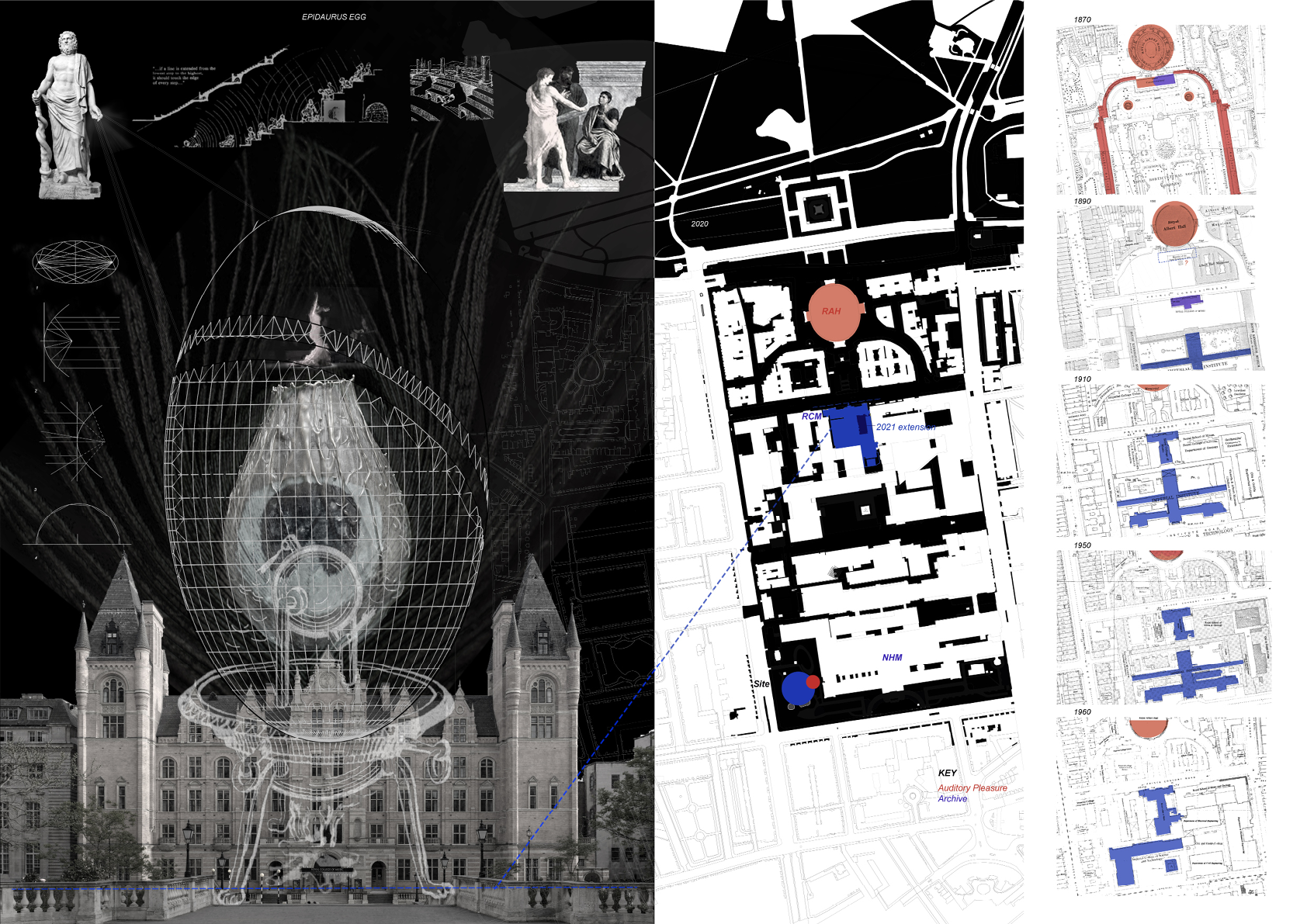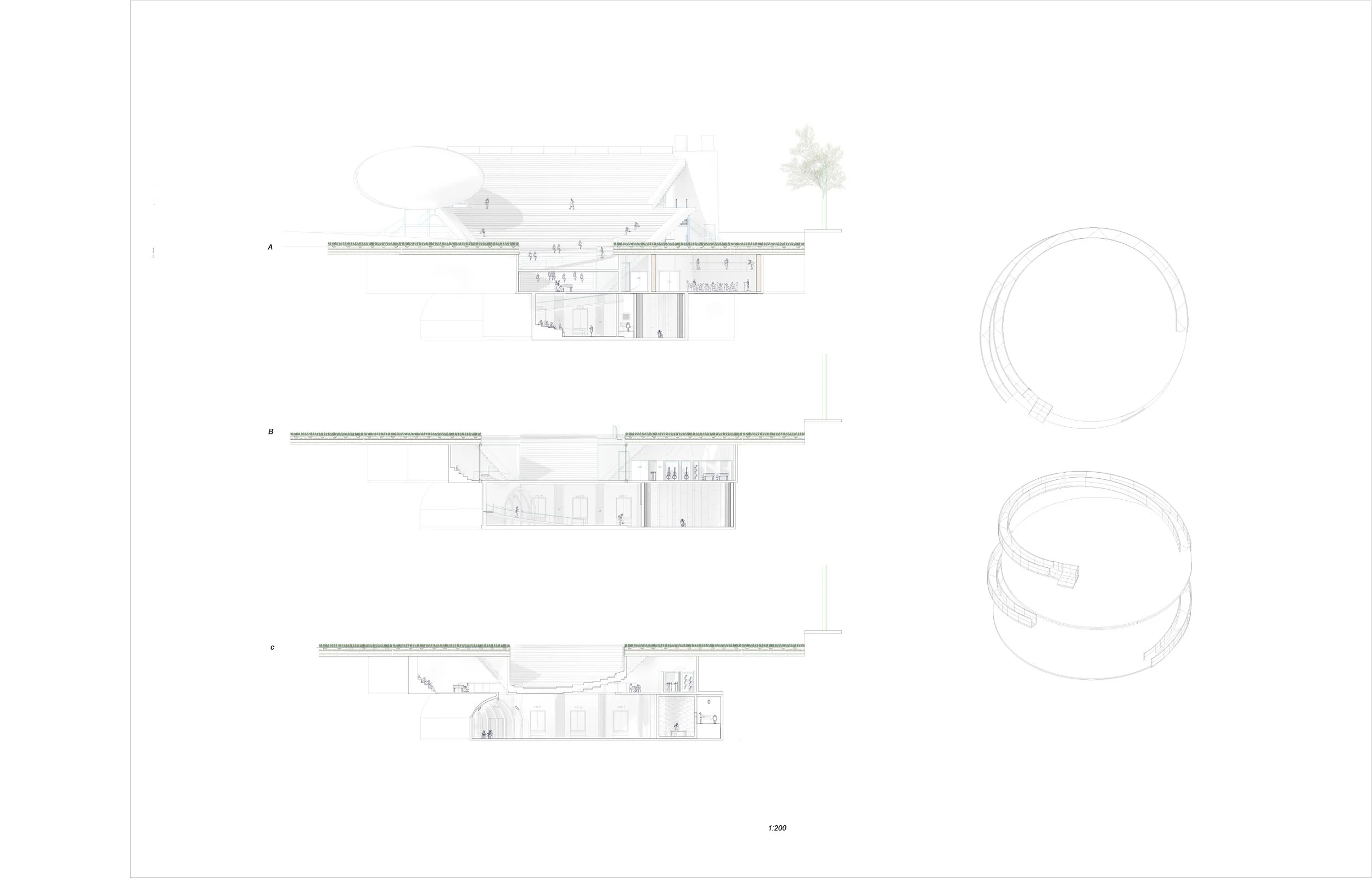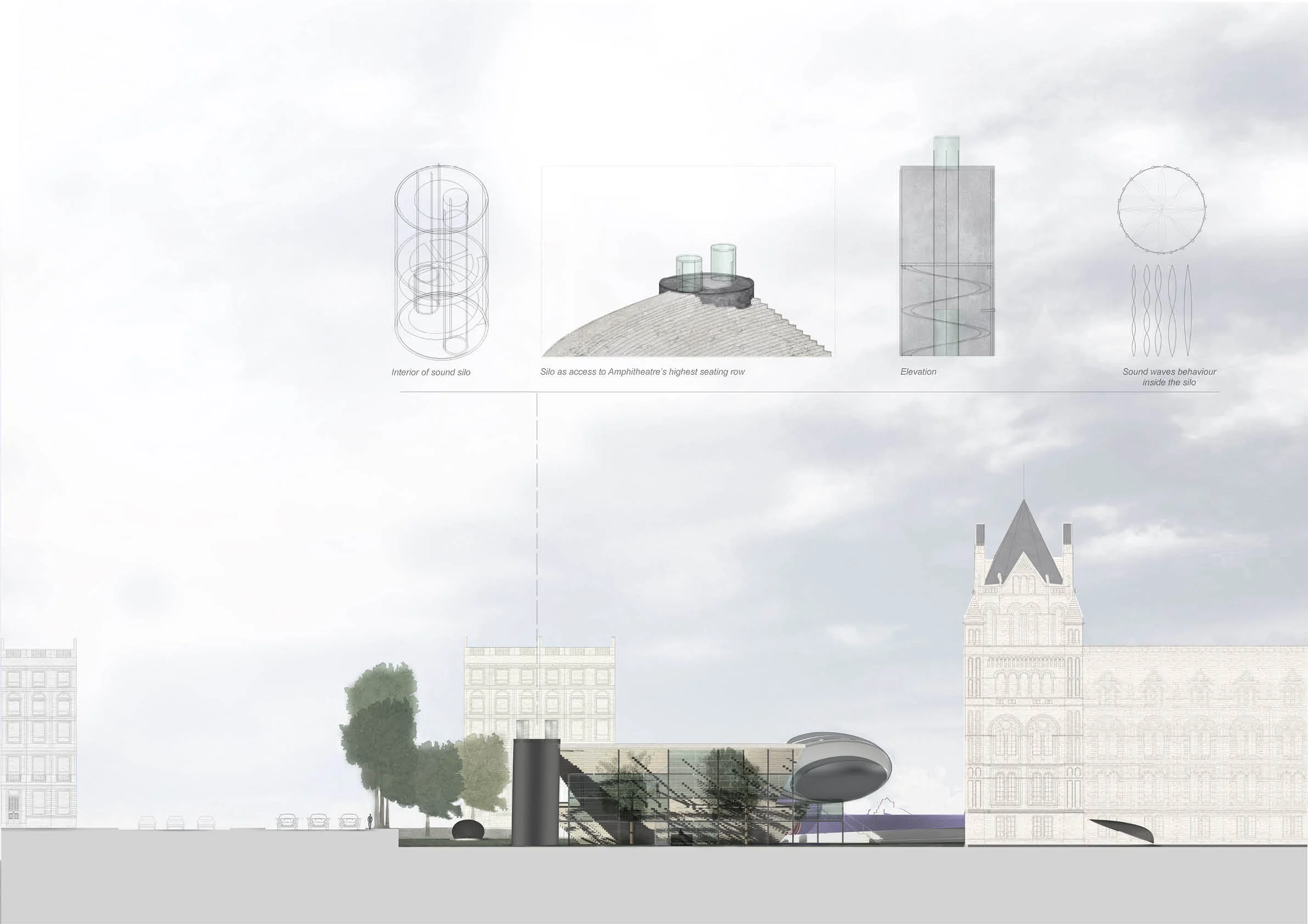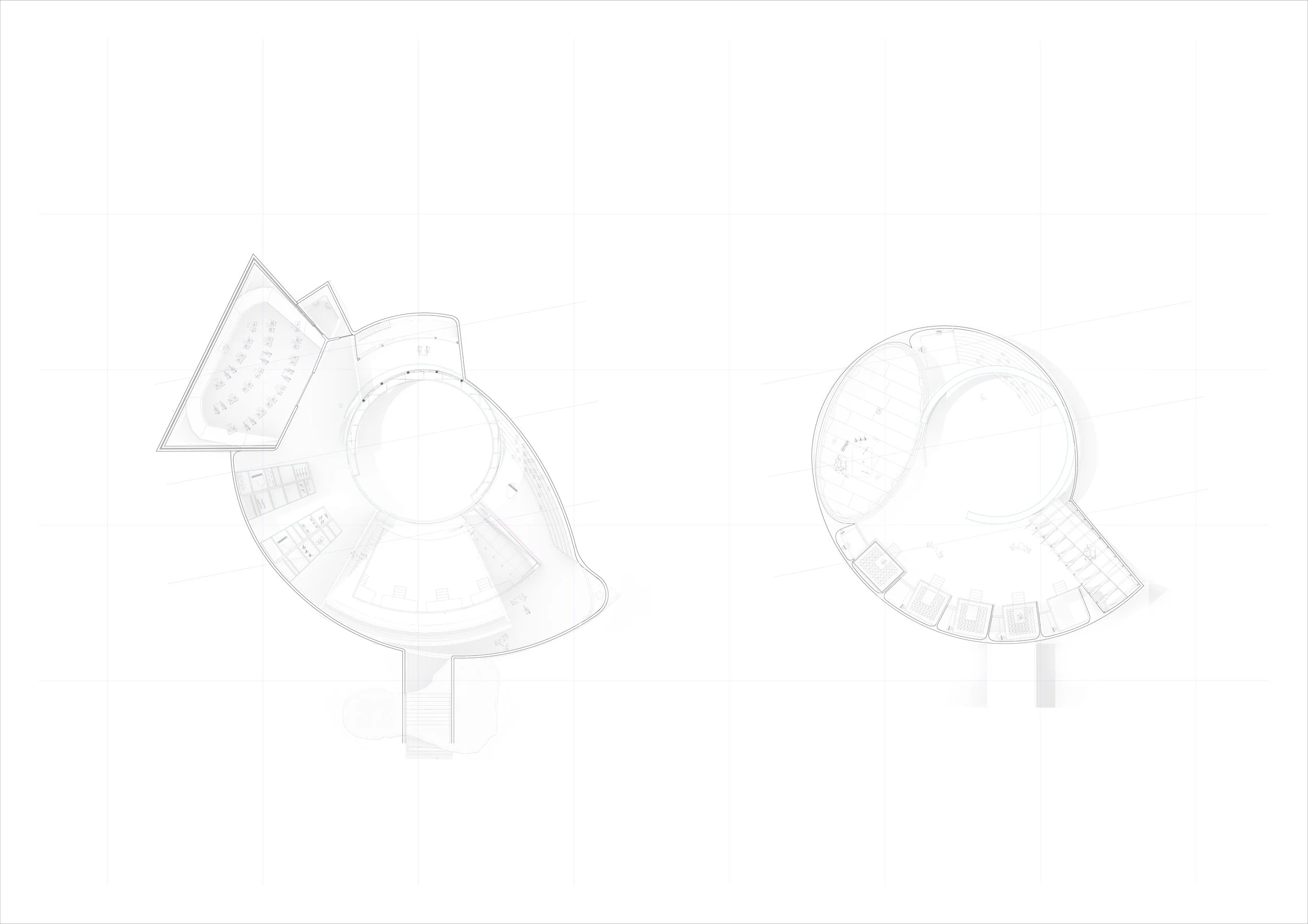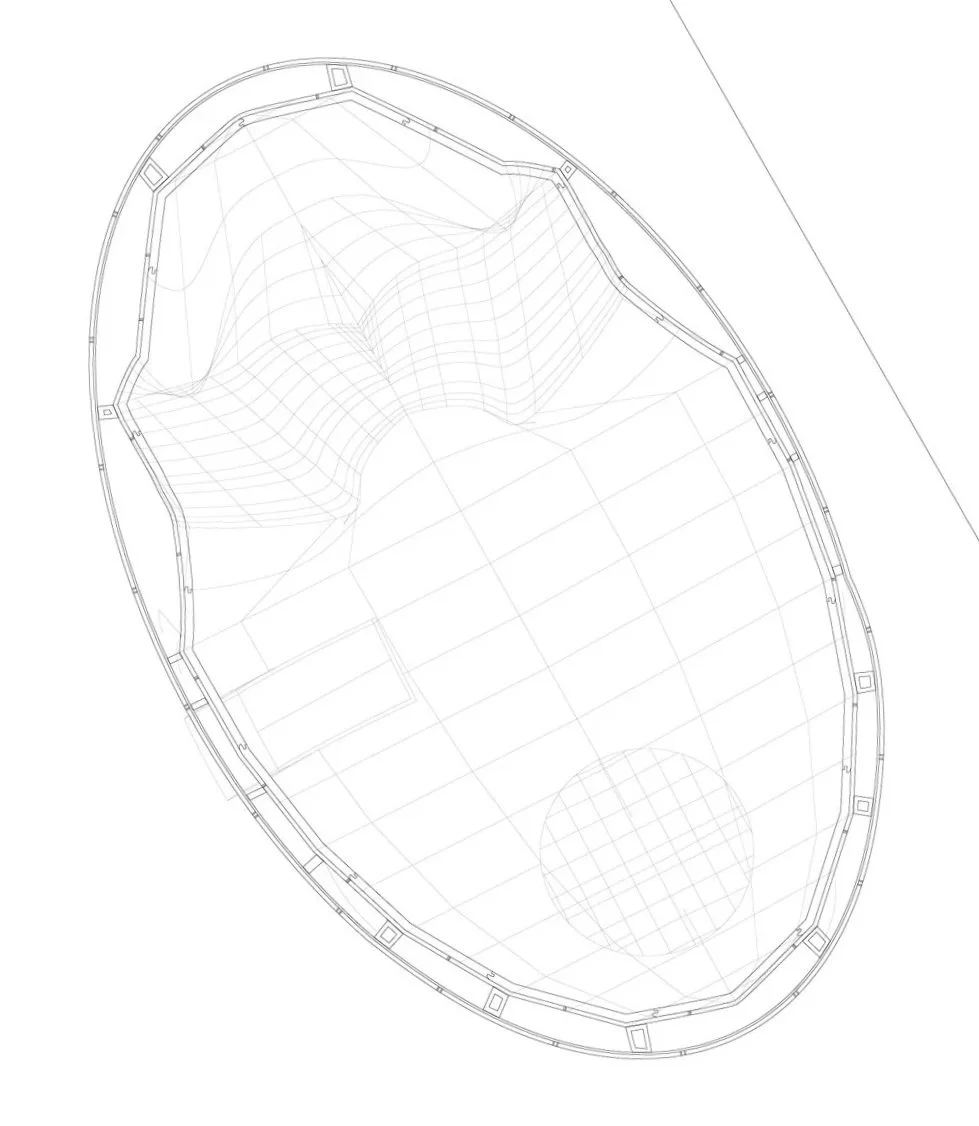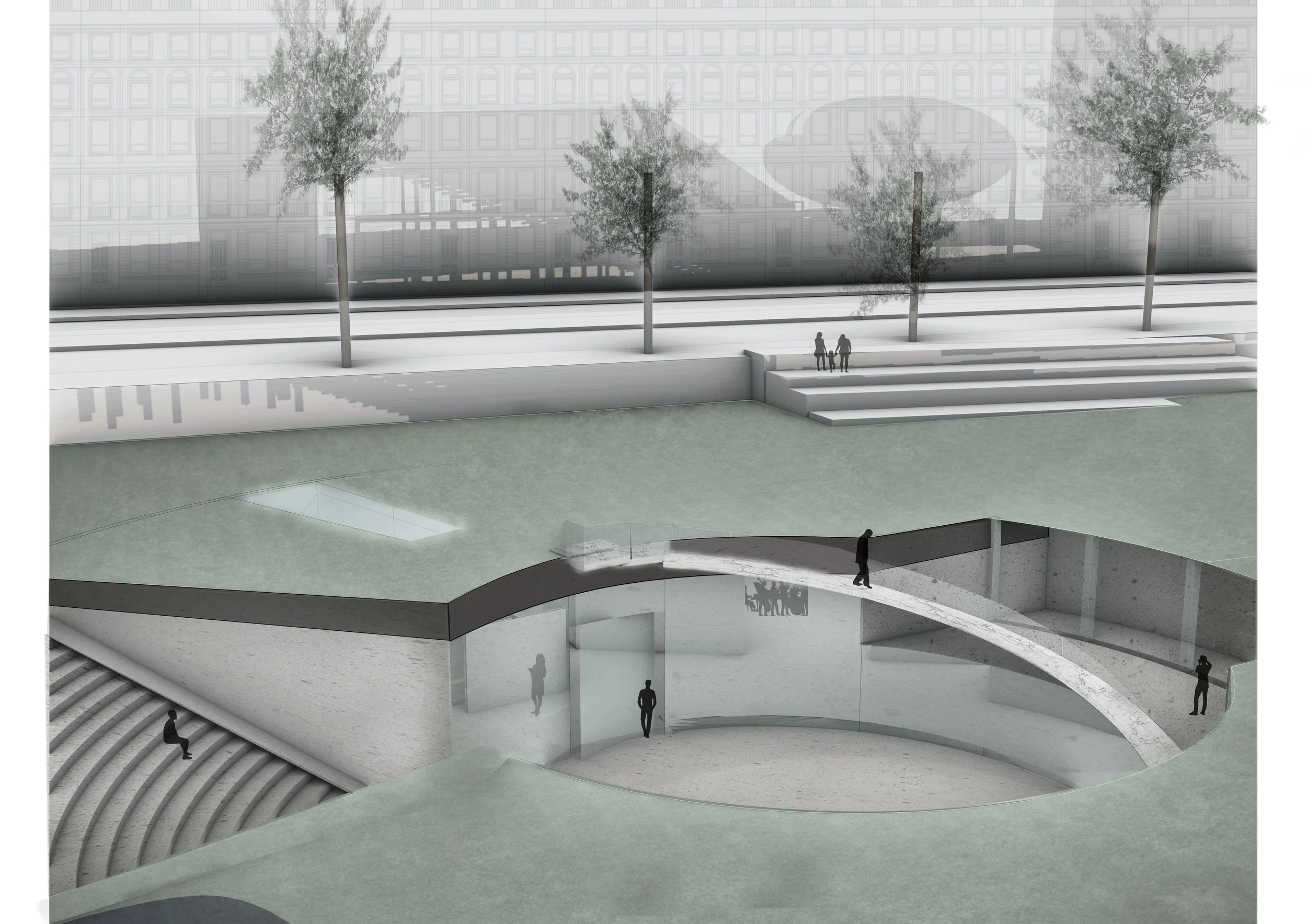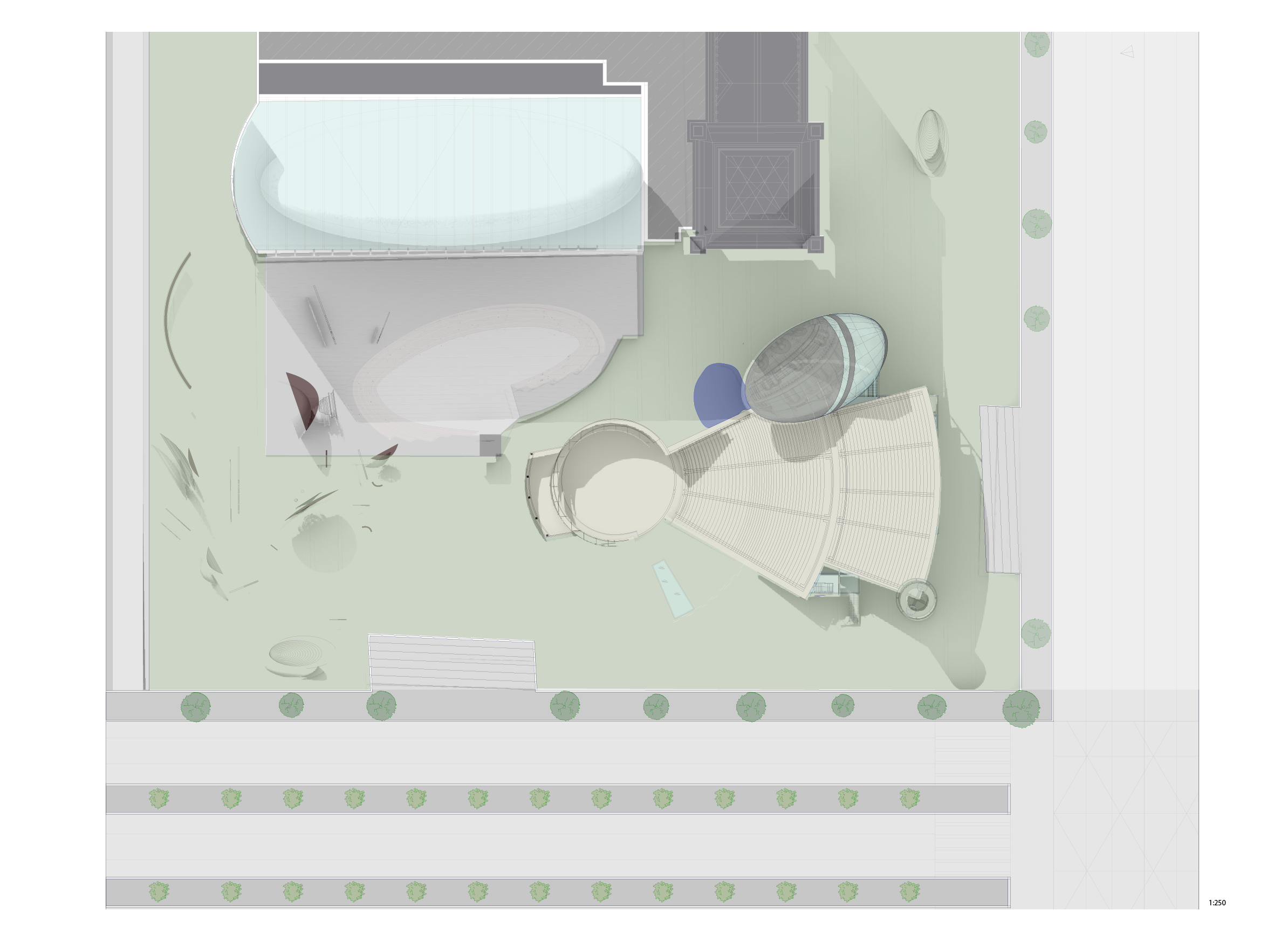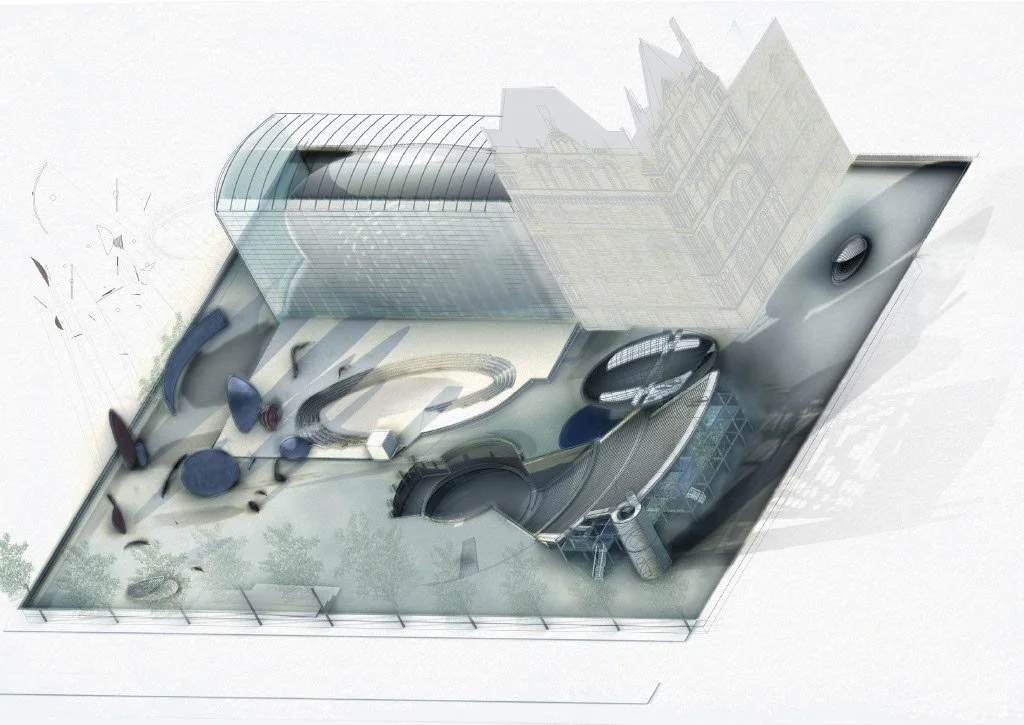Soundscape archive: Pleasure and silence
The urban pleasure garden is defined through a soundscape where visual and auditory experiences engages the user with the introduction of sound into architectural design.
The archive building, located beneath the landscape, consists of a research centre for musicians and students from the Royal College of Music. The differences between the senses of sight and sound is described through all elements of the project. The sound mirrors visually reflect the surroundings with sectional profiles that reveal the physics behind the sound making. The amphitheatre, modelled at true scale to the original Epidaurus in Greece, is seen as an expression of perfect sound while the said perfect auditory qualities are experienced through an auditorium located alongside this visual representation. Additional and ancillary facilities whether programmatic, circulatory and/or experiential are all designed to enhance the understanding of sound in relation to different spatial forms.
Institution
University of Westminster, London, UK
Year
2020
Experimental rooms
Previous to Albertopolis construction, the Royal Horticultural Society counted with Music Kiosks, a gallery and the Royal Albert Hall. The archive started with the museum at the Royal college of music and continued with the Imperial Institute and its further transformations. The proposal brings back to the community the pleasure of a soundscape together with a building for cultural development. Students of the Royal College of Music will be having a space for exploration and research based in experimental recital rooms that will significantly alter the sound-waves of their instruments, The Egg of Epidaurus is an auditorium that represents the contemporary perfect sound, therefore the geometry for this piece is key, it contrasts with the slice on site of the actual Epidaurus amphitheatre which represents the idyllic sound of the past.
The project narrative was deeply influenced by the practice of Bernard Tsumi and his publication Notations: Diagrams & Sequences. As well as the following books: Darran Andersen, Imaginary cities. John cage, Silence: Lectures and Writings. Javier Ariza, Images of sound. Branden W. Joseph, John Cage and the Architecture of Silence Smithsonian Mag ,5 1/2 Examples of Experimental Music Notation. Javier Ariza, The soundscape as time capsule: A creative project based on the sounds of the first train station of Cuenca. Marina Corral, Synaesthesia in graphic notation: visual language for sound representation. David Buck, A Musicology for Landscape. David Buck, Drawing Sound as Landscape. Feruccio Busoni, A New Aesthetic of Music. Nico F Declercq and Cindy S. A. Dekeyser, Acoustic diffraction effects at the Hellenistic amphitheater of Epidaurus: Seat rows responsible for the marvelous acoustic.
